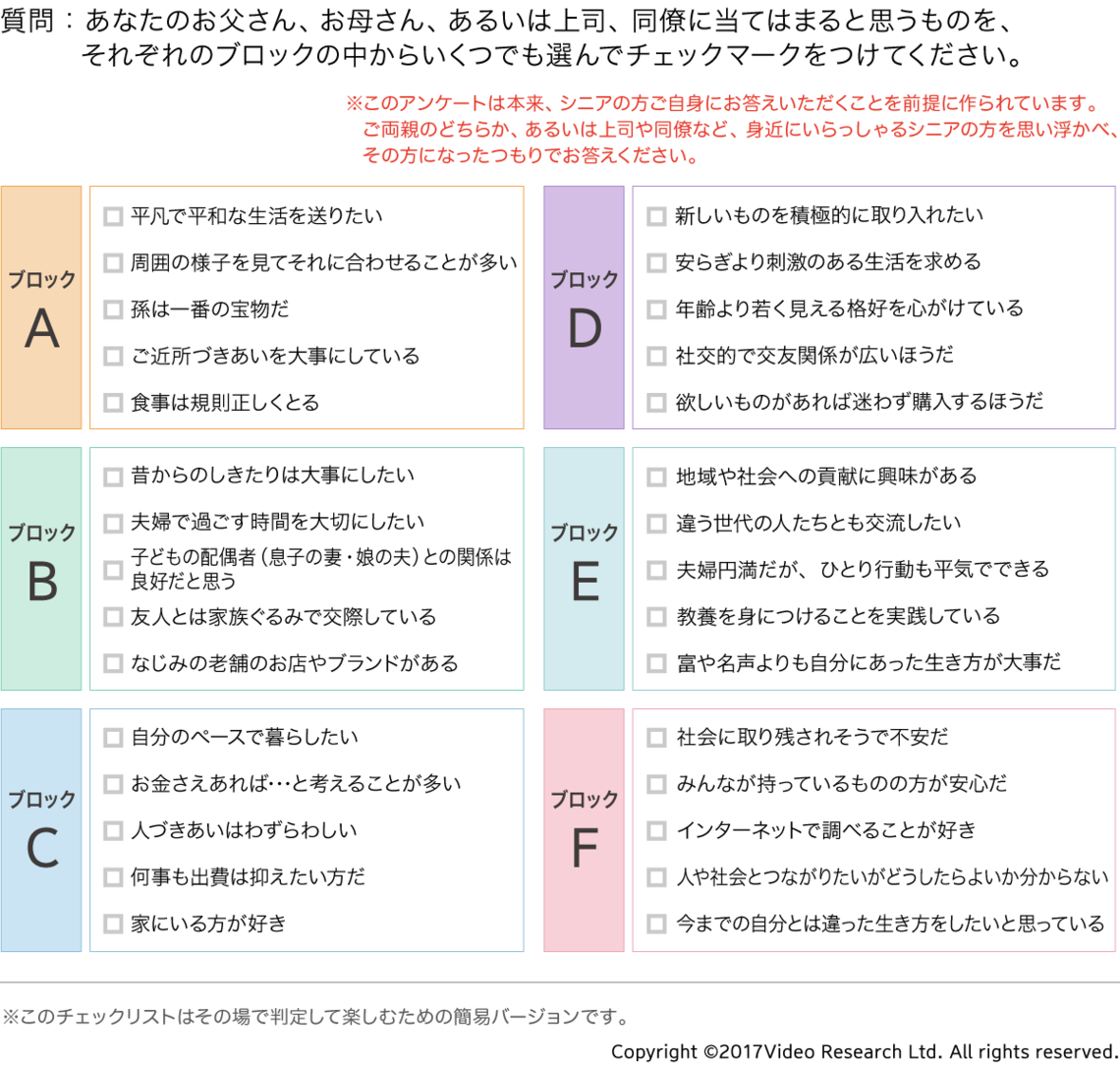What Type Are Your Parents or Boss? Assessment Checklist
If you haven't tried the senior assessment checklist yet, or if you have parents, bosses, colleagues, or relatives aged 55 to 74, or if you yourself fall into this category, please take the assessment.
The block with the most checkmarks represents that person's type.
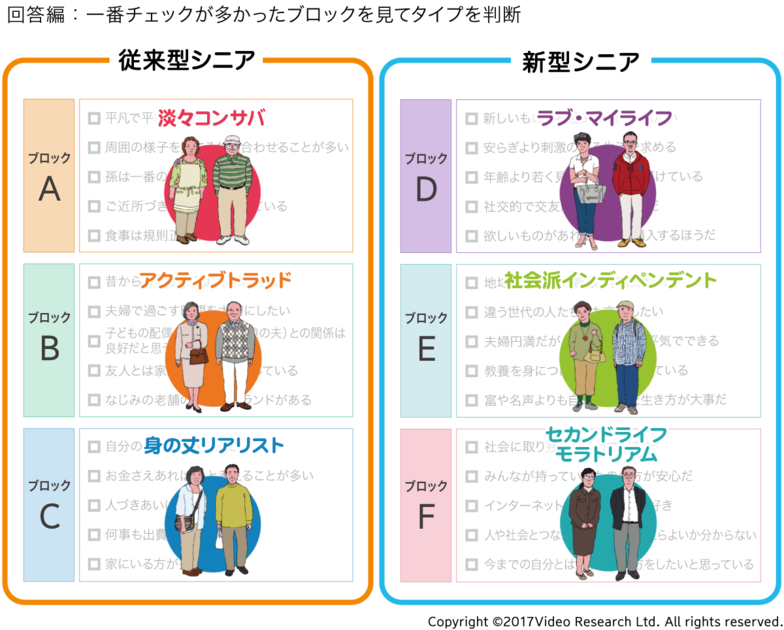
Those with the most checks in any of the left-side blocks A–C are "Traditional Seniors." Compared to younger generations, they hold traditional and conservative views.
On the other hand, those who checked more boxes in the right-side blocks D through F are "New-Style Seniors." They are people who seek change, stimulation, and new information in their lives.
Last time, we introduced the three types of "Traditional Seniors." This time, we explain the characteristics of the three types of "New Seniors" (Love My Life, Socially Conscious Independent, Second Life Moratorium) whose presence has become more apparent in recent years.
You can't truly understand today's seniors if you overlook these people. For more details, please read "The Key to Conquering the New Senior Market is the Moratorium Uncle!"
【Consuming Actively for Oneself: Love My Life】
These are the most proactive individuals who crave change and excitement. True to the segment name, they actively pursue fulfilling their lives and spend money to do so.
They adore new things, are well-informed, sensitive to trends, and favor high-end brands. Their consumption drive is simply robust; they spend without hesitation to satisfy their curiosity.
This type prioritizes their own remaining life above all else and shows little interest in "grandchild consumption"—a term almost always mentioned when discussing senior spending. Even those with grandchildren spend more on their own anti-aging care and hobbies than on their grandchildren. Of course, grandchildren are adorable, but not every senior lives solely for their grandchildren.
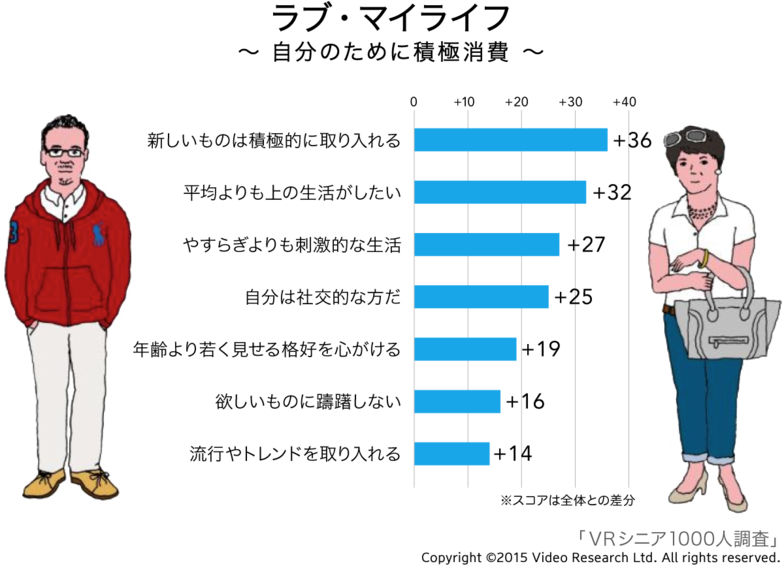
A woman (65) I interviewed appeared stylishly dressed in clothes bought at a select shop popular with younger women, accessorized with trendy brand bags and jewelry.
This type tends to be drawn to phrases like "authentic," "innovative," "active," and "customizable."
【Socially Conscious Independents: Enjoying Life While Serving Others】
While this type also actively seeks change and stimulation, their consumption, time management, and all conscious actions ultimately focus on "themselves" (Love My Life). In contrast, this Socially Conscious Independent directs their focus toward "others."
They value human connections, are eager to build new networks, and engage in cross-generational exchanges. Unbound by convention, they actively gather information, flexibly embrace new ideas, yet hold strong personal convictions.
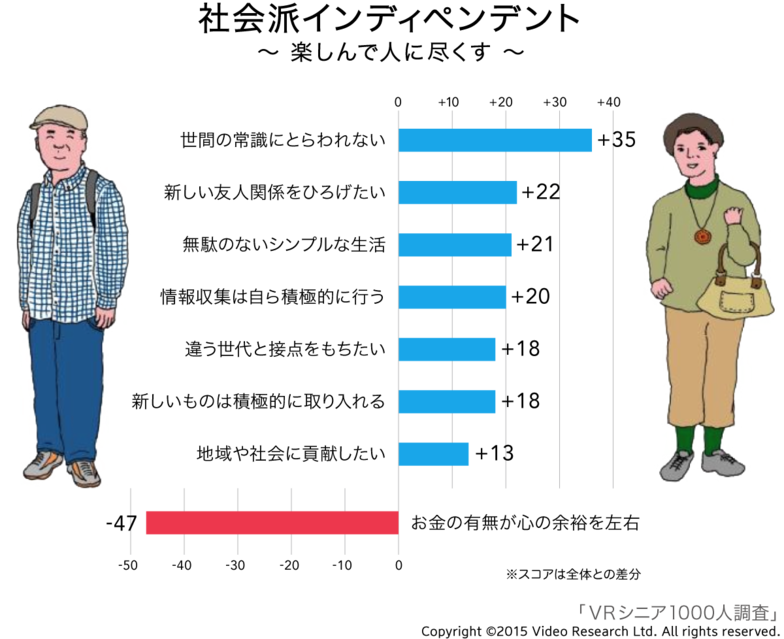
It's often said that awareness of contributing to society increases with age, and the Socially-Minded Independent is a prime example of this. They respond to terms like "eco," "LOHAS," "volunteer," "non-profit," and "fair trade." Among those I've met, comments like "I want to open a community cafe where everyone can gather" and "I interact widely with volunteer friends in their 20s to 50s" were particularly memorable.
Their enthusiasm for new experiences mirrors that of Love My Life members; one even started hip-hop in their 40s. They also share the trait of not relying entirely on spouses, grandchildren, or friends.
【Second Life Moratorium: Exploring a Second Chapter】
This type is the only one among the new seniors who enjoy change and stimulation that acts cautiously and modestly. While the previously mentioned Love My Life and Socially Conscious Independent types are "New Active Seniors," Second Life Moratorium is positioned as "Potential Seniors."
Their low-key actions make them less noticeable and less likely to draw attention, yet they actually hold high potential in various areas, including consumption. Moreover, they represent the largest group, accounting for about 30% of all seniors.
A defining characteristic of this group is their strong sense of uncertainty. They harbor intense anxiety about being left behind by society and a desire to connect with others, yet they feel unsure how to achieve it. True to their name, they are people searching for how to spend the rest of their lives.
Those who were once called corporate warriors or company men in their youth have now reached senior age. They fear losing the work they took pride in and the positions they built through retirement, or they have already lost them and are unsure what to do next. This is the typical state of the Second Life Moratorium.
While many might imagine this primarily affecting men, women are certainly present too, and the gender ratio for this type is roughly equal. The shared anxiety of having limited social connections and feeling left behind by society is common to both men and women.
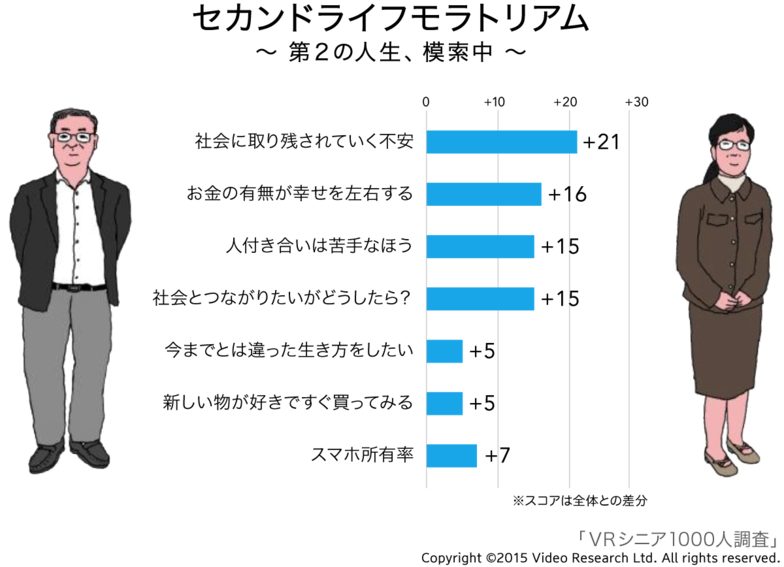
Because their social circle is narrow, they tend to become relatively dependent on their spouse. In interviews, when asked "Who would you want to travel with?", the only woman who answered "I want to go with my spouse" belonged to this Second Life Moratorium group. While this might be an unwelcome truth for men, it's worth adding that women from other types consistently responded with "with friends," "with my daughter," or "with my children's families and grandchildren (not just my spouse)."
While the "Second Life Moratorium" may appear reserved and seemingly unconnected to revitalizing the senior market, we believe these individuals are precisely the crucial target for future senior marketing. Focusing particularly on men in this category, we affectionately dubbed them "Moratorium Uncles."
In the next and final installment, we will further explain why we are focusing on these "Moratorium Uncles" now and what approaches are effective for them.

